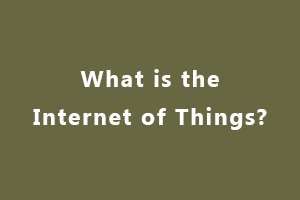The Internet of Things i.e. IoT, It’s basically the network that comprises devices, vehicles, buildings, or any other connected electronic devices. This framework of interconnection facilitates the collection and exchange of data across these components.
The Internet of Things is going to be one of the biggest software development and testing opportunities of all time. IoT brings about many new things in terms of testing requirements, including quite a few unusual device types like home appliances, watch sensors, etc. With all this mix of products in the IoT ecosystem, it becomes essential for the QA team to come with an effective test strategy to meet the quality of these diverse products.
Components of IoT
As the IoT setup introduces innumerable challenges so to overcome such a mix of challenges, the QA needs to make sure a robust testing framework is in place. Designing a framework depends on the various types of devices involved in the IoT ecosystem, but there are some basic features that should be part of the IoT
Testing frameworks are listed below:
- Protocol simulators: An IoT setup involves working with multiple protocols. They would be very handy and helpful when there is a lot of variations in the device endpoints and their interfaces.
- Data Recorders: The data recorders from different types of devices are going to be very helpful in smart validation across device sets. The recorded data can be played across different device end-points automatically, which can be a great support in compatibility testing of apps across different communication layers.
- Virtualization of: would make The real-time validation of the application behavior very difficult if there is a highly complex nature of the IoT ecosystem, Therefore, implying the sufficient amounts of virtualization into the IoT applications which use the services on which are built, will result in faster turnaround. It will reduce the costs due to minimal dependency on the real-time environment.
- Building the Labs that serve the entire digital portfolio to perform the experiment and simulate real-time experiences that would help us inform smarter ways of testing.
IoT is a connection of identifiable embedded devices that implies the existing Internet infrastructure. IoT is the era of internet connected products that communicate and transfer a large amount of data and upload it to the cloud.
The types of testing recommended across the IoT ecosystem:
- Performance testing: It covers the rapidness of the communication network model and the internal computation capabilities of the embedded software system.
In IoT, the Performance Testing should be done at Network and Gateway level (protocols like MQTT, CoAP, HTTP, etc), and the System Level (Database, processing, analytics), and the Application Level.
- Security Testing: Security aspects like data protection, device identity authentication, encryption/decryption, etc. are covered under this testing. The Security Testing includes both securing the devices themselves and the networks or cloud services.
Sensor networks, real-time data collection applications, interfaces, and M2M protocols are just a few variables that could bring in more threat points. Security test at the device and protocol level is one of the major areas where issues can be found.
Example: Verify no unauthorized access to the device. Verify the data on compromised devices can be wiped out remotely
- Compatibility testing: This type of testing is performed with the possible combination of device version, protocol version, mobile devices, and mobile OS version. Compatibility testing becomes a major necessity in the Application Layer and the Network Layer of the IoT framework. It s validating the possible working combination of device hardware, communication protocol versions, software versions, and operating systems.
- End-user application Testing: It covers the testing of all functional use cases of an IoT application which also covers the user experience and usability testing
Example: Verify that the IoT application has all required features working as per the given specifications.
- Device Interoperability Testing: This involves assessing the ability to seamlessly interoperate protocols and devices across the different specifications. Interoperability Testing in the Service Layer of the IoT framework becomes very crucial because IoT requires standards to enable platforms that are communicable, operable, and programmable across devices, regardless of make, model, or industry.
Example: The transactions done or data saved on iPad is “As-is” when accessed through Mac desktop, If a user is using an iPad as well as a Mac for IoT application,
If you have skills in PHP programming and you want to enhance your career in this field, a PHP certification from StudySection can help you reach your desired goals. Both beginner level and expert level PHP Certification Exams are offered by StudySection along with other programming certification exams.




